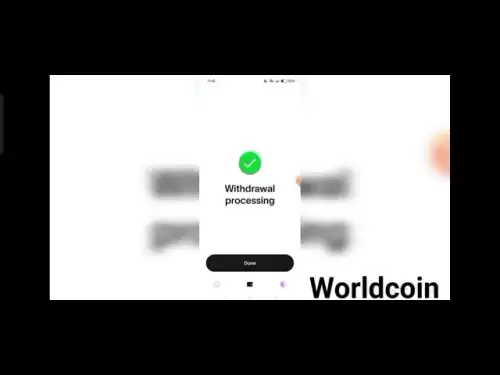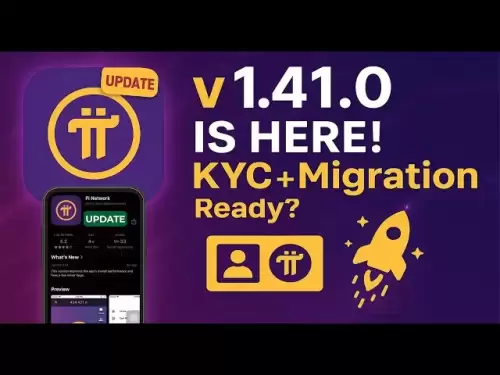-
 Bitcoin
Bitcoin $107,525.4151
-1.78% -
 Ethereum
Ethereum $2,735.6082
-4.05% -
 Tether USDt
Tether USDt $1.0001
0.01% -
 XRP
XRP $2.2422
-3.58% -
 BNB
BNB $662.7596
-0.79% -
 Solana
Solana $158.1687
-5.10% -
 USDC
USDC $0.9999
0.01% -
 Dogecoin
Dogecoin $0.1877
-7.49% -
 TRON
TRON $0.2747
-4.49% -
 Cardano
Cardano $0.6822
-5.47% -
 Hyperliquid
Hyperliquid $42.8962
-1.51% -
 Sui
Sui $3.3250
-4.95% -
 Chainlink
Chainlink $14.3884
-7.23% -
 Avalanche
Avalanche $21.0727
-6.00% -
 Bitcoin Cash
Bitcoin Cash $436.3853
-1.50% -
 Stellar
Stellar $0.2743
-2.67% -
 UNUS SED LEO
UNUS SED LEO $8.8628
-1.94% -
 Toncoin
Toncoin $3.1809
-3.06% -
 Shiba Inu
Shiba Inu $0.0...01261
-6.46% -
 Hedera
Hedera $0.1687
-4.92% -
 Litecoin
Litecoin $88.6994
-4.81% -
 Polkadot
Polkadot $4.0555
-5.96% -
 Monero
Monero $324.3593
-3.71% -
 Ethena USDe
Ethena USDe $1.0004
-0.02% -
 Bitget Token
Bitget Token $4.7112
-3.27% -
 Dai
Dai $0.9998
0.00% -
 Pepe
Pepe $0.0...01205
-9.02% -
 Uniswap
Uniswap $7.8362
-4.82% -
 Pi
Pi $0.6225
-2.58% -
 Aave
Aave $300.8914
-3.70%
How to participate in Bitcoin mining?
Understanding Bitcoin mining involves grasping the process of validating blockchain transactions, verifying their authenticity, and obtaining rewards in the form of newly created bitcoins.
Feb 21, 2025 at 06:00 am
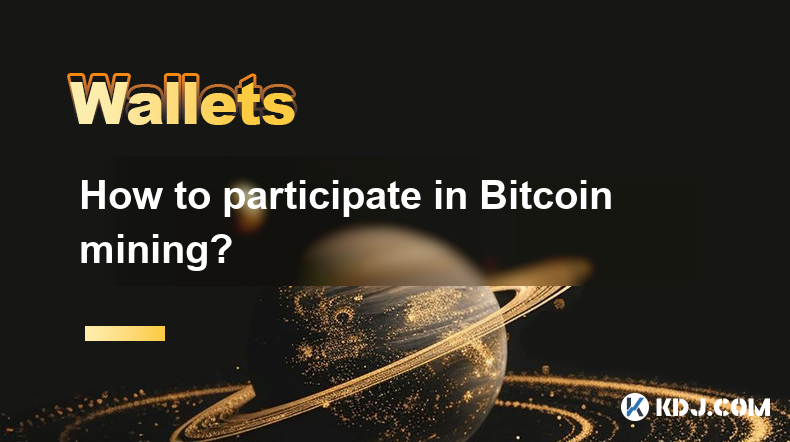
Key Points:
- Understanding Bitcoin Mining
- Choosing the Right Hardware
- Setting Up a Mining Rig
- Joining a Mining Pool
- Monitoring Your Mining Operation
- Managing Costs and Rewards
- Staying Up-to-Date on Mining Developments
How to Participate in Bitcoin Mining
1. Understanding Bitcoin Mining
Bitcoin mining is the process of creating new bitcoins by solving complex mathematical equations. Miners use specialized computers to verify and validate transactions on the Bitcoin blockchain. In return for their efforts, miners earn bitcoins as a reward. Bitcoin mining is a highly competitive process, and only those with the most powerful hardware have a chance of being successful.
2. Choosing the Right Hardware
The most important factor in successful Bitcoin mining is having the right hardware. There are two main types of mining hardware: ASIC miners and GPU miners. ASIC miners are designed specifically for Bitcoin mining and are much more efficient than GPU miners. However, ASIC miners are also much more expensive. GPU miners, on the other hand, are less efficient than ASIC miners, but they are also less expensive.
3. Setting Up a Mining Rig
Once you have chosen your mining hardware, you need to set up a mining rig. A mining rig is simply a computer that is dedicated to mining Bitcoin. To set up a mining rig, you will need:
- A motherboard
- A CPU
- A GPU or ASIC miner
- A power supply
- A cooling system
4. Joining a Mining Pool
Once your mining rig is set up, you need to join a mining pool. Mining pools are groups of miners who pool their resources to increase their chances of finding a block. When a block is found, the reward is split among the members of the pool. There are many different mining pools available, so you will need to research to find one that is right for you.
5. Monitoring Your Mining Operation
Once you have joined a mining pool, you need to monitor your mining operation. This includes checking your hashrate, which is a measure of how much computing power your rig is contributing to the pool. You should also check your profitability, which is a measure of how much money you are earning from mining Bitcoin.
6. Managing Costs and Rewards
Bitcoin mining can be a profitable endeavor, but it is important to manage your costs and rewards carefully. The cost of mining Bitcoin includes the cost of hardware, electricity, and cooling. The reward for mining Bitcoin is the bitcoin that you earn. You need to make sure that your rewards are greater than your costs in order to be profitable.
7. Staying Up-to-Date on Mining Developments
Bitcoin mining is a constantly evolving field. It is important to stay up-to-date on the latest developments in mining hardware, software, and techniques. This will help you to maximize your profits and stay ahead of the competition.
FAQs:
- What is the hashrate of a mining rig?
- The hashrate of a mining rig is a measure of how much computing power the rig is contributing to a mining pool. The higher the hashrate, the more likely the rig is to find a block and earn a reward.
- How can I calculate my profitability in Bitcoin mining?
- To calculate your profitability in Bitcoin mining, you need to consider the cost of your hardware, electricity, and cooling. You also need to consider the reward for mining Bitcoin. You can use a mining profitability calculator to estimate your profitability.
- What are the risks of Bitcoin mining?
- The risks of Bitcoin mining include the risk of losing money, the risk of hardware failure, and the risk of electricity costs. You should carefully consider these risks before you start mining Bitcoin.
Disclaimer:info@kdj.com
The information provided is not trading advice. kdj.com does not assume any responsibility for any investments made based on the information provided in this article. Cryptocurrencies are highly volatile and it is highly recommended that you invest with caution after thorough research!
If you believe that the content used on this website infringes your copyright, please contact us immediately (info@kdj.com) and we will delete it promptly.
- USDC Expands Its Stablecoin Offering to XRP Ledger (XRPL), Targeting New Use Cases
- 2025-06-13 00:01:18
- How to Track Your Wallet Activity On Etherscan
- 2025-06-13 00:01:18
- Bitcoin Solaris (BTC-S): The Next 10,000x?
- 2025-06-13 00:01:17
- BlockDAG (BDAG) Emerges as a Contender by Hooking NBA Buzz
- 2025-06-13 00:01:17
- Hacker Who Stole $23 Million from Crypto Exchange Bittrue Starts Laundering Proceeds Through Tornado Cash
- 2025-06-12 23:50:12
- Bitcoin Briefly Surpassed $110,000
- 2025-06-12 23:50:12
Related knowledge
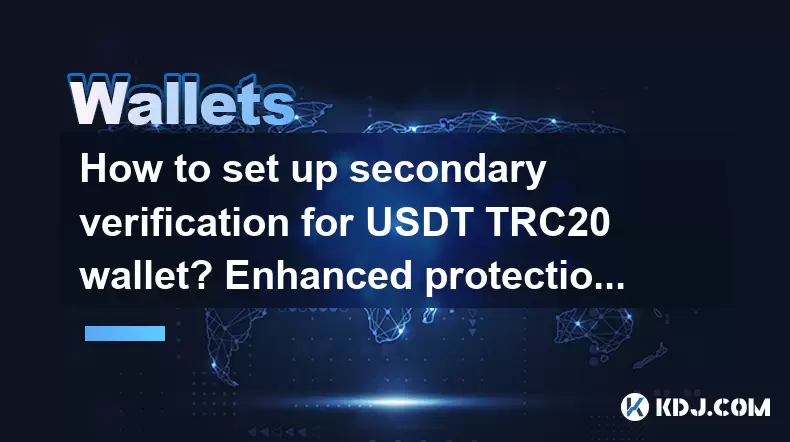
How to set up secondary verification for USDT TRC20 wallet? Enhanced protection
Jun 12,2025 at 12:07pm
Understanding USDT TRC20 Wallets and Security NeedsWith the increasing popularity of Tether (USDT) on the TRON (TRC20) network, securing digital assets has become a critical concern for users. A USDT TRC20 wallet is essentially a blockchain wallet that supports the TRC20 protocol, allowing users to store, send, and receive USDT tokens. Given the volatil...

How to use USDT TRC20 wallet anonymously? Privacy protection guide
Jun 12,2025 at 11:35pm
Understanding USDT TRC20 and Its Privacy ImplicationsUSDT TRC20 refers to the Tether (USDT) cryptocurrency that operates on the TRON blockchain. Unlike its Ethereum-based ERC20 counterpart, TRC20 offers faster transactions and lower fees. However, despite these advantages, privacy remains a significant concern for many users who wish to transact anonymo...
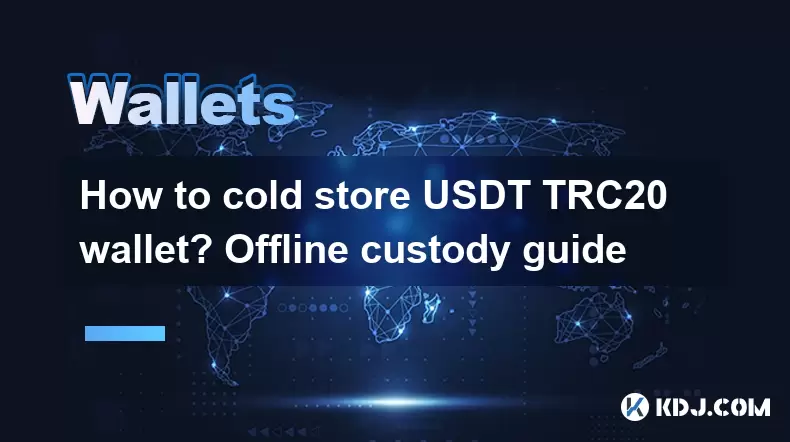
How to cold store USDT TRC20 wallet? Offline custody guide
Jun 11,2025 at 09:36pm
Understanding USDT TRC20 and Cold StorageUSDT (Tether) is a stablecoin pegged to the value of the U.S. dollar, offering stability in the volatile cryptocurrency market. TRC20 refers to the technical standard used for smart contracts on the Tron blockchain, which is different from Ethereum's ERC-20. When it comes to securing your USDT TRC20 tokens, cold ...

How to export USDT TRC20 private key? Security operation guide
Jun 11,2025 at 07:08pm
Understanding USDT TRC20 and Private KeysTether (USDT) is one of the most widely used stablecoins in the cryptocurrency market. The TRC20 version of USDT operates on the TRON blockchain, offering faster transaction speeds and lower fees compared to its ERC-20 counterpart on Ethereum. When you hold USDT TRC20, your ownership is secured through a private ...
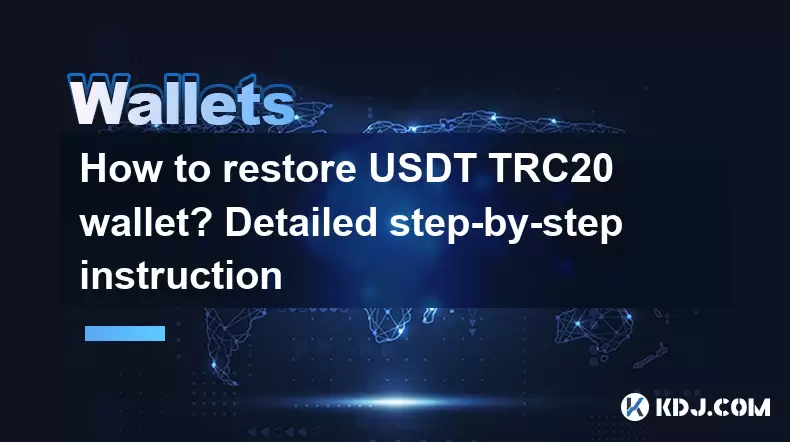
How to restore USDT TRC20 wallet? Detailed step-by-step instruction
Jun 12,2025 at 06:56am
Understanding the USDT TRC20 Wallet Restoration ProcessRestoring a USDT TRC20 wallet typically involves retrieving access to your digital assets using either a private key, a seed phrase, or a wallet address. This process is crucial for users who have lost access to their wallets due to device changes, software issues, or accidental deletion. The TRC20 ...
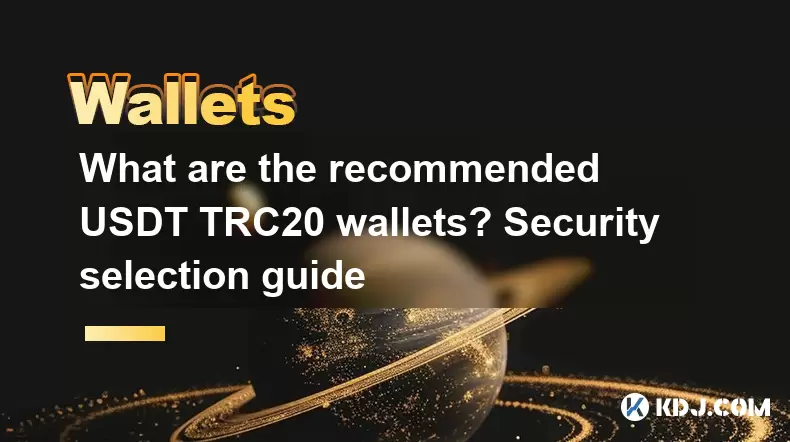
What are the recommended USDT TRC20 wallets? Security selection guide
Jun 12,2025 at 06:42pm
Understanding USDT TRC20 and Wallet CompatibilityUSDT TRC20 is a version of the Tether stablecoin that operates on the TRON blockchain. Unlike the ERC-20 variant which runs on Ethereum, TRC20 offers lower transaction fees and faster confirmation times, making it popular among traders and users who frequently transact in USDT. To store and manage USDT TR...

How to set up secondary verification for USDT TRC20 wallet? Enhanced protection
Jun 12,2025 at 12:07pm
Understanding USDT TRC20 Wallets and Security NeedsWith the increasing popularity of Tether (USDT) on the TRON (TRC20) network, securing digital assets has become a critical concern for users. A USDT TRC20 wallet is essentially a blockchain wallet that supports the TRC20 protocol, allowing users to store, send, and receive USDT tokens. Given the volatil...

How to use USDT TRC20 wallet anonymously? Privacy protection guide
Jun 12,2025 at 11:35pm
Understanding USDT TRC20 and Its Privacy ImplicationsUSDT TRC20 refers to the Tether (USDT) cryptocurrency that operates on the TRON blockchain. Unlike its Ethereum-based ERC20 counterpart, TRC20 offers faster transactions and lower fees. However, despite these advantages, privacy remains a significant concern for many users who wish to transact anonymo...

How to cold store USDT TRC20 wallet? Offline custody guide
Jun 11,2025 at 09:36pm
Understanding USDT TRC20 and Cold StorageUSDT (Tether) is a stablecoin pegged to the value of the U.S. dollar, offering stability in the volatile cryptocurrency market. TRC20 refers to the technical standard used for smart contracts on the Tron blockchain, which is different from Ethereum's ERC-20. When it comes to securing your USDT TRC20 tokens, cold ...

How to export USDT TRC20 private key? Security operation guide
Jun 11,2025 at 07:08pm
Understanding USDT TRC20 and Private KeysTether (USDT) is one of the most widely used stablecoins in the cryptocurrency market. The TRC20 version of USDT operates on the TRON blockchain, offering faster transaction speeds and lower fees compared to its ERC-20 counterpart on Ethereum. When you hold USDT TRC20, your ownership is secured through a private ...

How to restore USDT TRC20 wallet? Detailed step-by-step instruction
Jun 12,2025 at 06:56am
Understanding the USDT TRC20 Wallet Restoration ProcessRestoring a USDT TRC20 wallet typically involves retrieving access to your digital assets using either a private key, a seed phrase, or a wallet address. This process is crucial for users who have lost access to their wallets due to device changes, software issues, or accidental deletion. The TRC20 ...

What are the recommended USDT TRC20 wallets? Security selection guide
Jun 12,2025 at 06:42pm
Understanding USDT TRC20 and Wallet CompatibilityUSDT TRC20 is a version of the Tether stablecoin that operates on the TRON blockchain. Unlike the ERC-20 variant which runs on Ethereum, TRC20 offers lower transaction fees and faster confirmation times, making it popular among traders and users who frequently transact in USDT. To store and manage USDT TR...
See all articles
























